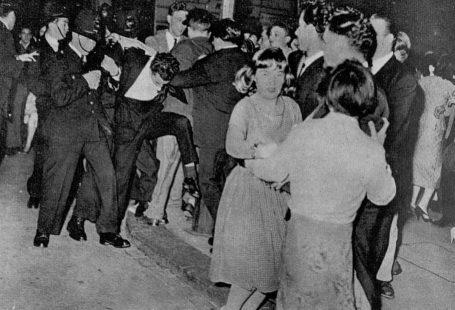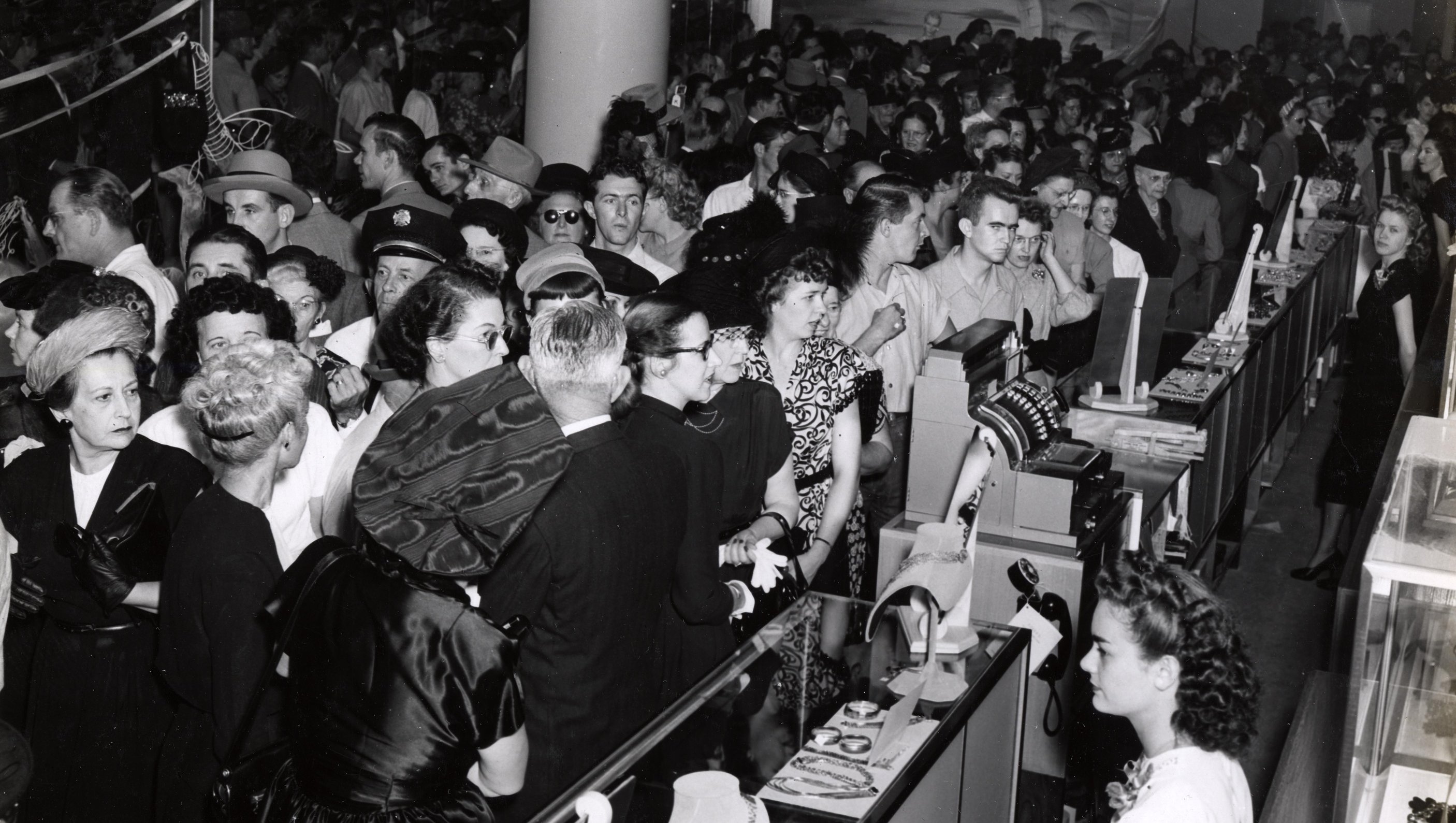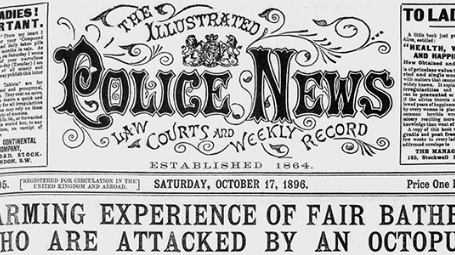‘Perhaps the most terrible catastrophe that ever occurred on the Thames took place last night,’ writes the Greenock Telegraph and Clyde Shipping Gazette on 4 September 1878, ‘when the saloon steamboat Princess Alice, with about eight hundred passengers, was run down by a passing screw-steamer.’
This tragic incident, representing the largest loss of life on Britain’s inland waterways, saw pleasure steamer the Princess Alice, laden with London day-trippers, cut almost in three as she collided with collier Bywell Castle.
The Princess Alice and the Bywell Castle collide | The Graphic | 14 September 1878
Although the exact death toll for this appalling incident was never known, due to there being no passenger lists kept, it is thought that between 600 and 700 people, women, men and children, died that fateful September night.
In this special blog, we take a look at how newspapers of the time reported on what was then labelled the ‘Princess Alice Disaster,’ and how the news quickly disseminated from London and across the country.
Register now and explore The Archive
A Disaster Almost Unparalleled
Steamboat the Princess Alice had set out on 3 September 1878 from Swan Pier, near London Bridge, on what was billed as a ‘Moonlight Trip.’ Passengers would be conveyed to Sheerness, stopping at Rosherville pleasure gardens, and thence back to the city. But tragedy was to strike an hour after sunset, as she returned from Rosherville.
But what exactly had happened in the darkness of the river? The Greenock Telegraph and Clyde Shipping Gazette, only a day after, carried this report:
The steamboat was on her way from Sheerness to London, in completion of her day’s excursion, and had got within sight of Woolwich, the tide running down strong, when a sharp corner had to be turned. It is supposed that in order to effect the manoeuvre the vessel was ported, so as to gain a greater scope for swinging. Whilst this was being done, a cargo steamer came down the river, and encountering the upward bound vessel almost broadside on, ran into her, striking the sponson the port side.
The location of the collision | Illustrated London News | 14 September 1878
The article continues on, relating how ‘the blow was fatal, as the side of the passenger steamer was torn down below the water line, and the vessel immediately began to sink; and amidst the shrieks of the perishing passengers she went down in comparatively deep water, within five minutes of the collision taking place.’
One can only imagine the ‘peculiar horror‘ and the confusion of the scene. And indeed, the Victorian press did imagine most vividly the last moments of the victims of the tragedy, with melodrama typical of the time:
Almost within sight of their own homes – far inland away from the treacherous sea, did these gay hearts sink beneath the muddy waters.
This piece from the Mansfield Reporter, from the 6 September, describes the ‘disaster almost unparalleled in the annals of the history of our country,’ noting how ‘Many a mourning one will remember with tears the third of September.’
But other reports from the time were slightly more hopeful in tone, as the extent of the tragedy was not yet known. The Greenock Advertiser, on 4 September, reports how ‘Hopes are entertained that the extent of the catastrophe may somewhat be lessened.’ But in the course of the same article, such hopes were dashed. It was reported that ‘only about 150 of those who were on board the Princess Alice were saved out of 700,’ as she was sunk ‘in 18 feet of water.’
Recovery Efforts
Soon after the Princess Alice went down, the recovery mission began. What aggravated the disaster beyond its initial horror was how she had sunk in a part of the river where raw sewerage had just been dumped. This led to survivors becoming sick, and the bodies of the dead becoming polluted beyond recognition.
On the 5 September 1878, it was being reported by the Leicester Daily Post that ‘Divers have been employed to ascertain the position of the Princess Alice.’ The next day, the Bradford Daily Telegraph printed particularly lurid rumors from the Standard, which stated that divers had found ‘about 200 people in the vessel, some in a sitting position, and others huddled together as though sleeping.’
Illustrated London News | 14 September 1878
Meanwhile, The Times reported how divers had found ‘cabins…full of bodies standing erect and packed together at the points of exit, where they must have crowded in the struggle to escape.’ The Victorian press did not protect their readers from the horrors of what had unfolded, rather they embraced the graphic and macabre renderings of such a disaster.
However, there was some accuracy in these reports, as the Times wrote that ‘there is too much reason to dread that between 600 and 700 have been sacrificed,’ which would be the eventual toll agreed on.
Identifying and Burying the Dead
The recovery mission also extended to the bodies of the victims. The Dundee Evening Telegraph reports on 6 September 1878 that ‘twenty-two bodies have been recovered during the night and landed at Woolwich Dockyard.’
But the process for identifying the victims was thwarted by the condition of the bodies. The effluence in the river meant that the bodies were covered in slime, and as the Dundee Courier reports on 10 September, many were ‘swollen and discoloured beyond recognition.’
Victims of the collision are brought to Woolwich Pier | Illustrated London News | 14 September 1878
The condition of the bodies also meant that they needed to be buried as soon as possible, as the Greenock Advertiser relays:
Further identifications were proceeded with…on the representation of the churchwardens as to the absolute necessity of burying a number of the bodies not yet identified, the coroner signed the burial orders for 74 bodies, which will be committed to the earth today.
The Dundee Courier further outlines how the unidentified bodies were to be ‘immediately buried for sanitary reasons,’ but describes how these victims were treated with the utmost care, dignity and respect:
Thirteen unidentified victims were buried yesterday, being conveyed to the cemetery on army service wagons, in charge of a mounted sergeant. The shops in Woolwich were closed. An immense crowd assembled, but their conduct was irreproachable.
The Greenock Advertiser describes how 600 bodies had been recovered by the 10 September, with 450 claimed. Many of the victims were washed on shore by the ebb tide at Tripcock Point, close to where the incident occurred.
Illustrated London News | 14 September 1878
Identifications were still being made weeks later during the inquest, via the victims’ clothing. According to the Shipping and Mercantile Gazette‘s report on the inquest, 25 September 1878:
Several persons came forward during the day came forward and gave evidence as to the identification of the clothing of deceased persons whose remains had been interred in the neighbourhood of Woolwich, and asked for permission to have the bodies disinterred. In all cases certificates were given.
The Best and Worst of Human Nature
But even in light of such tragedy, the worst of human nature came to the fore. The Penny Illustrated Paper reports on the 14 September 1878 how landlord Mr Bow had been approached by relatives of his dead tenants, a Mr Joseph Ellis, his wife and child who had all been killed in the disaster. Ellis’s family wanted to take ‘the goods and effects of his unfortunate lodger,’ but his wife’s family wanted the property to remain. In the end, Mr Bow was advised that he ‘could not be wrong in delivering up the goods to the relatives of the husband.’
However, Victorian philanthropy was stirred into action as a result of tragedy. The Greenock Advertiser reports how ‘the sufferers by the Thames disaster were again assured by Her Majesty’s gracious sympathy.’ A fund was set up by the Mansion House to relieve ‘cases of distress,’ which amounted to £22,000 by the 25 September 1878 (over £1.3 million today). Meanwhile, the Mayor of Maidstone had also opened a subscription fund in aid of the survivors, and those who had been left behind.
The Inquest
But many were asking how this accident could have occurred, or as the Mansfield Reporter put it, ‘Almost we all we can do at present is to…marvel that several hundred human beings could possibly be suddenly launched into eternity in the principal waterway of the Kingdom, and within so short a distance of the largest and richest city in the world.’
This of course was the purpose of the inquest, which heard from surviving crew members and passengers from the Princess Alice.
The Princess Alice | Illustrated London News
The Aberdeen Press and Journal printed an account of the inquest, and the frantic moments before the collision:
Witness hearing the man forward shout ‘Steamer ahead’ looked and saw the light over the starboard bow a quarter of a mile distant. About four minutes later the captain shouted ‘Where are you coming to?’ and in three seconds they were struck.
The captain, William Grinstead, who died as a result of the collision, was described as a ‘sober, steady, and careful man.’ The Shipping and Mercantile Gazette reports also how he was ‘perfectly sober and had declined refreshment, as he stated that a great responsibility rested on him.’
Eyewitness accounts were particularly harrowing, one witness describing how ‘The Bywell Castle came into us as if she were a knife cutting bread…the blow she had received would have sunk an ironclad.’
Woolwich Town Hall, the site of the inquest | Illustrated London News | 14 September 1878
The inquest found both vessels to be at fault, but with the main burden of responsbility falling on the Bywell Castle:
The Princess Alice starboarded, and showed her green light four minutes before the Bywell Castle ported and opened her red light. The Bywell Castle should not have ported when the green light of the Princess Alice was seen, and when it was evident that she had starboarded. The Princess Alice starboarded her helm to avoid two difficulties – being struck on the port bow, or coming in collision with a barge.
Further, separate, inquests were held on the victims of the disaster, including Miss Ellen Hanbury, who, according to the Shipping and Mercantile Gazette had ‘expired…from the effects of immersion after the collision.’
Recovery of the victims | Illustrated London News | 14 September 1878
Ellen had been on the Princess Alice with her sweetheart and friends. She was a good swimmer, and after the Princess Alice had sunk she had ‘kept afloat for two hours,’ remarkably getting ‘nearly two miles from the scene of the wreck, when she was taken in a boat.’ She was accompanied by her sweetheart, but there only being room for one in the boat, her sweetheart was left behind. With a tragic flourish of Victorian sentimentality, her sweetheart is reported as saying ‘Good-bye, we shall meet in heaven,’ before he was ‘lost.’
Damages
In December, the London Steamboat Company, owners of the Princess Alice, brought damages of £20,000 against the owners of the Bywell Castle, who in turn had brought £2,000 against them.
The judge in this case, Sir R. Phillimore, according to the Ashby-de-la-Zouche Gazette, stated how it ‘appeared that the Princess Alice was negligently navigated, and was therefore to blame for the collision,’ but the Bywell Castle had taken a ‘wrong manoeuvre’ when faced with the impending impact.’ Ultimately, he ruled that ‘both vessels [were] to blame for the collision.’
The Bywell Castle, after the collision | Illustrated London News | 14 September 1878
And admist the legal wrangling, it seems that the victims of this disaster were largely forgotten, swept away with the flood of the river. These were people from all walks of life, enjoying a day trip on London’s famous waterway, and they should have all returned to their homes. But they didn’t. Instead, they were victim to a catalogue of errors, from overcrowding to poor navigation, to the arrangements that saw raw sewerage being dumped in the Thames, a lack of lifeboats, amongst other failings.
This tragedy did produce change; sewerage was then taken out to sea, and the Metropolitan Police provided their Marine Police Force with steam launches instead of row-boats. But the damage had been done, and the newspapers of the day give us insight into this tragedy, and help us to remember it, over 140 years later.
















